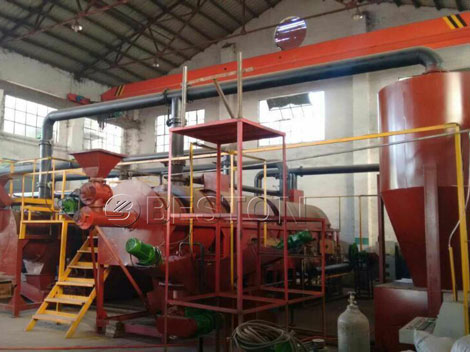Bamboo Carbonization Process
Bamboo charcoal hails from bits of various bamboo plants that were harvested after at least 5yrs. These pieces are then placed into ovens and burnt at temperatures that vary from 800 to 1200 degrees Celsius. The bamboo carbonization process is claimed to profit environmental protection in the way of decreasing pollutant residue. It is also known as an operating environmental material that has outstanding absorption properties.
Activated bamboo charcoal can be a material which has a thorough Chinese history that documents back to 1486 throughout the era of your Ming dynasty in Chuzhou Fu Zhi. It has additionally been mentioned in the Qing dynasty once the emperors Guangxu and Kangxi Qianlong reigned.
Production
Bamboo charcoal hails from bamboo when it comes to a variety of pyrolysis process. The raw material type classifies bamboo charcoal into two categories referred to as bamboo briquette and raw-bamboo charcoal. The raw charcoal arises from the plant of your bamboo for example the roots, branches and culms whilst the briquettes are crafted from the residue from bamboo such as saw powder and bamboo dust. This material is compressed into a specific shape and after that carbonizing these sticks. Usually there may be 2 equipment processes utilized for bamboo carbonization process. The first is the mechanical process and also the other involves utilizing a brick kiln.
Other Procedures Involved in Making Bamboo Charcoal
The entire process of bamboo carbonization is split up into 4 stages: http://carbonationmachine.net/bamboo-charcoal-machine/.
1st Stage Drying
The temperature inside the kiln is going to be under 120 degrees Celsius and the carbonization process is slow. The temperature evaporates water inside of the bamboo while the chemical composition remains intact.
2nd Stage Pre-carbonization
The temperature now increases up to 260 degrees Celsius along with a definite chemical reaction occurs in the bamboo. The chemicals that are unstable learn to decompose releasing carbon monoxide and co2.
3rd Stage Carbonization
The temperature now increases approximately 450 degrees Celsius as well as the material decomposes into gas and liquid products. The liquid part contains high quantities of bamboo tar, methanol and acetic acid. Even though the flammable ethylene and methane gas products increase and the carbon-dioxide production decreases. Read more info now: WWW.CARBONATIONMACHINE.NET.
4th Stage Refining Stage
The temperature exceeds 450 degrees Celsius as well as the bamboo turns into charcoal in the form of offering extensive heat and emitting volatile substance and enhancing non-volatile carbon. Based on the temperature used in this portion of the process, the charcoal is further split into three categories. Such as: low temperature, middle-temperature along with the high-temperature charcoal.
The last portion of the process involves letting the charcoal cool off and influenced by environmental influences the process might take 5 to 8 days in large volumes. Over these processes anybody can extract medicinal liquid in water form, vinegar, tar and alcohol along with other products. The products obtained from the bamboo charcoal have various uses for example treating stomach aches, heart diseases, influenza, allergies and skin disease onto washing, cooking, cosmetics, gardening, disinfectants, deodorants, bactericides, germicides and insecticides among many more.
Activated bamboo charcoal can be a material which has a thorough Chinese history that documents back to 1486 throughout the era of your Ming dynasty in Chuzhou Fu Zhi. It has additionally been mentioned in the Qing dynasty once the emperors Guangxu and Kangxi Qianlong reigned.
 |
| Bamboo charcoal making machine |
Production
Bamboo charcoal hails from bamboo when it comes to a variety of pyrolysis process. The raw material type classifies bamboo charcoal into two categories referred to as bamboo briquette and raw-bamboo charcoal. The raw charcoal arises from the plant of your bamboo for example the roots, branches and culms whilst the briquettes are crafted from the residue from bamboo such as saw powder and bamboo dust. This material is compressed into a specific shape and after that carbonizing these sticks. Usually there may be 2 equipment processes utilized for bamboo carbonization process. The first is the mechanical process and also the other involves utilizing a brick kiln.
Other Procedures Involved in Making Bamboo Charcoal
The entire process of bamboo carbonization is split up into 4 stages: http://carbonationmachine.net/bamboo-charcoal-machine/.
1st Stage Drying
The temperature inside the kiln is going to be under 120 degrees Celsius and the carbonization process is slow. The temperature evaporates water inside of the bamboo while the chemical composition remains intact.
2nd Stage Pre-carbonization
The temperature now increases up to 260 degrees Celsius along with a definite chemical reaction occurs in the bamboo. The chemicals that are unstable learn to decompose releasing carbon monoxide and co2.
3rd Stage Carbonization
The temperature now increases approximately 450 degrees Celsius as well as the material decomposes into gas and liquid products. The liquid part contains high quantities of bamboo tar, methanol and acetic acid. Even though the flammable ethylene and methane gas products increase and the carbon-dioxide production decreases. Read more info now: WWW.CARBONATIONMACHINE.NET.
4th Stage Refining Stage
The temperature exceeds 450 degrees Celsius as well as the bamboo turns into charcoal in the form of offering extensive heat and emitting volatile substance and enhancing non-volatile carbon. Based on the temperature used in this portion of the process, the charcoal is further split into three categories. Such as: low temperature, middle-temperature along with the high-temperature charcoal.
The last portion of the process involves letting the charcoal cool off and influenced by environmental influences the process might take 5 to 8 days in large volumes. Over these processes anybody can extract medicinal liquid in water form, vinegar, tar and alcohol along with other products. The products obtained from the bamboo charcoal have various uses for example treating stomach aches, heart diseases, influenza, allergies and skin disease onto washing, cooking, cosmetics, gardening, disinfectants, deodorants, bactericides, germicides and insecticides among many more.


Comments
Post a Comment